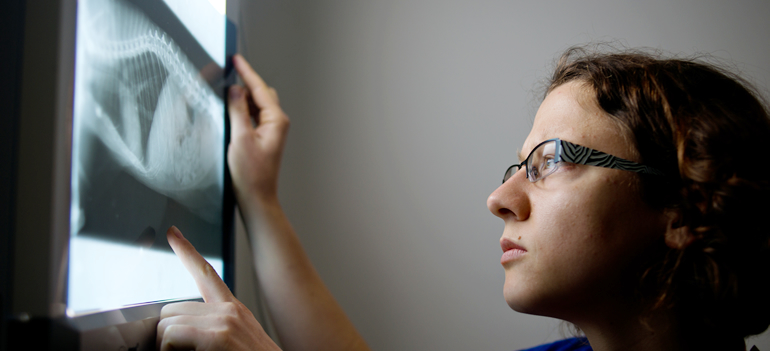VETERINARY SERVICES

X-RAYS
This is a vital diagnostic step for many patients. All imaging starts with a gross visual evaluation of the patient and following clinical examination specific areas can be imaged either by xrays (radiographs), ultrasound or endoscopy.
Radiography (the science of taking diagnostic radiographs) is a serious health risk to operators. As such, this is done under strict supervision with minimal human contact. To allow the safe taking of radiographs all patients will be sedated or anaesthetised and positioned using sand bags. Only in extenuating circumstances, e.g. life threatening emergencies, will awake animals be hand held. Anyone can take a radiograph. It takes skill to take one of diagnostic quality.
Radiology is the science behind reading an xray to elicit a diagnosis. This process is one that takes time and needs experience. We follow strict protocols to ensure we get pictures of diagnostic quality that can be read by knowledgeable vets to help us with our investigations.
Ultrasonography
Ultrasonography is very useful in veterinary diagnostics as it allows us to see the architecture and better assess the function of tissues, where xrays tend only show size and shape and some degree of density.
This is commonly used in investigations relating to organ function, staging for neoplastic disease, reproductive concerns and to aid us when taking diagnostic fine needle aspirate samples from difficult to reach tissues.
Patients will need to be shaved for this type of examination, so that we can achieve good contact between the skin and ultrasound probe, enhanced by a layer of gel.
Endoscopy
Endoscopy is useful to look inside often gas filled organs such as the nose, oesophagus, stomach and colon. Duodenoscopy is possible in some smaller individuals. This examination can also allow us to take small biopsies for histopathology analysis. It is a less invasive method for biopsy collection than surgery but it does have its limitations. This will almost always be performed only after other imaging methods have failed to reveal the problem.

